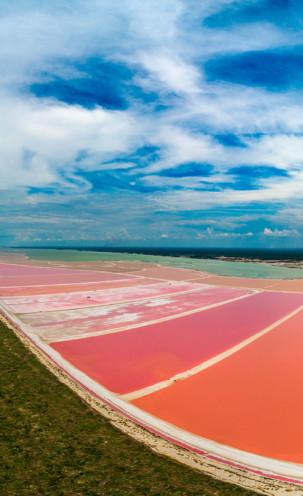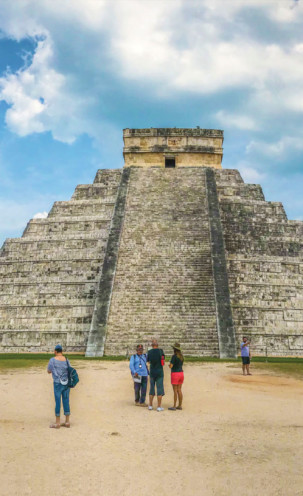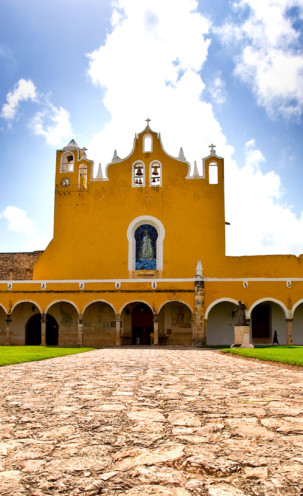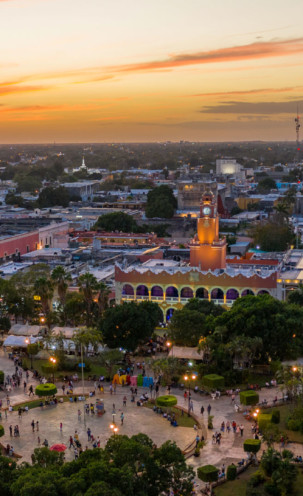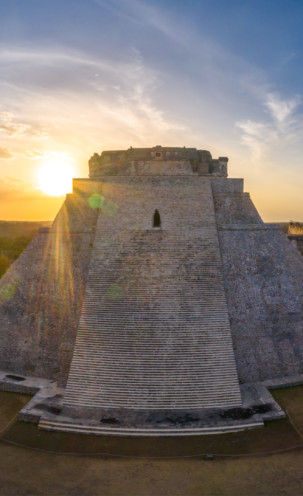
About
The Yucatán is known for its haciendas. These were built in the second half of the 19th century with the support of the ancient families that had large territorial properties since colonial times, through the participation of their heirs and the sponsorship of new wealthy groups that had developed from the trading business.
Moreover, the state is known for being full of cenotes, fantastic watersheds and caves that were flooded during the last glaciation. Besides being time capsules in which incredible limestone formations can be observed, they constitute the main source of fresh water in the region, since there are no rivers on the surface due to the layer of limestone found below the state.
Currently there are approximately 3,000 cenotes registered in the state of Yucatán whereof less than half are open to the public and approximately 300 "haciendas" distributed in the municipalities of Cuzamá, Chocholá, Hocabá, Homún, Izamal, Motul, Sotuta, Tecoh, Tixkokob, Uman, among others.
Main destinations
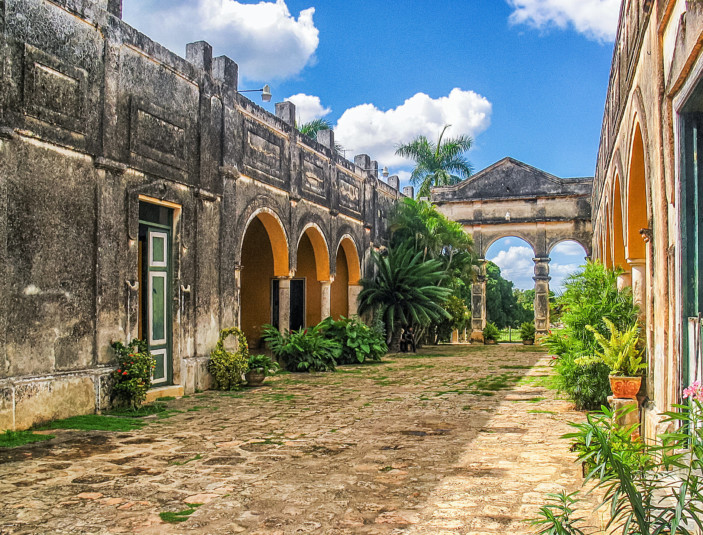 Hacienda Yaxcopoil
Hacienda YaxcopoilHacienda Yaxcopoil
Yaxcopoil is an estate where time just seems to stand still. You will pay an entrance fee of $100 pesos per person to wander freely through the bedrooms in the main house. There you will see the large dining rooms and captivating bedrooms with high ceilings, original mosaic floors, and European furniture in each bedroom.
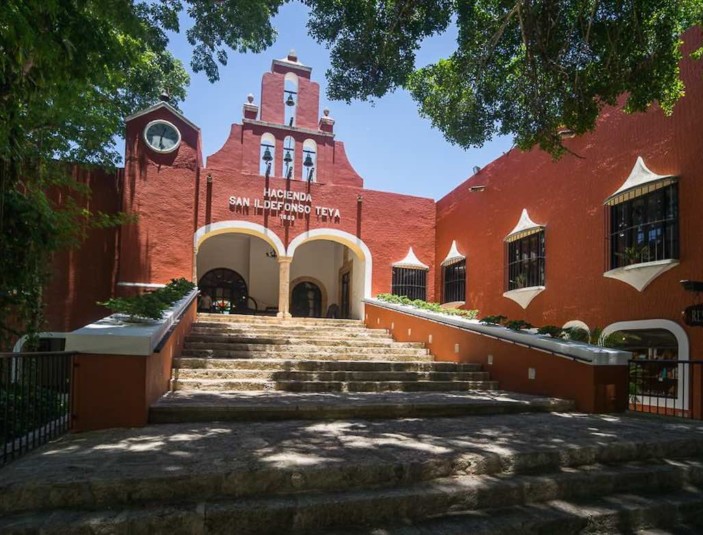 Hacienda Teya
Hacienda TeyaHacienda Teya
Teya is only 12.5 kilometers from Mérida and has gradually become a major attraction for visitors. Its architecture enchants all those who visit it, because of its green areas and corridors, the countryside atmosphere and the essence of the past that can be beheld in its facilities. To be at Hacienda Teya is like going back in time.
The hacienda has been noticeably refurbished. Today, it is recognized for its restaurant of exquisite Yucatecan food, for its green areas and halls for social events within a structure of 17th century buildings and exuberant vegetation. In addition, at the hacienda you will find a shop, a chapel, suites, and a breathtaking ballroom with mirrors and shiny pool that will really impress you.
Teya has received international celebrities such as Queen Sofía from Spain, Hillary Clinton, the Dukes of Luxembourg, among others.
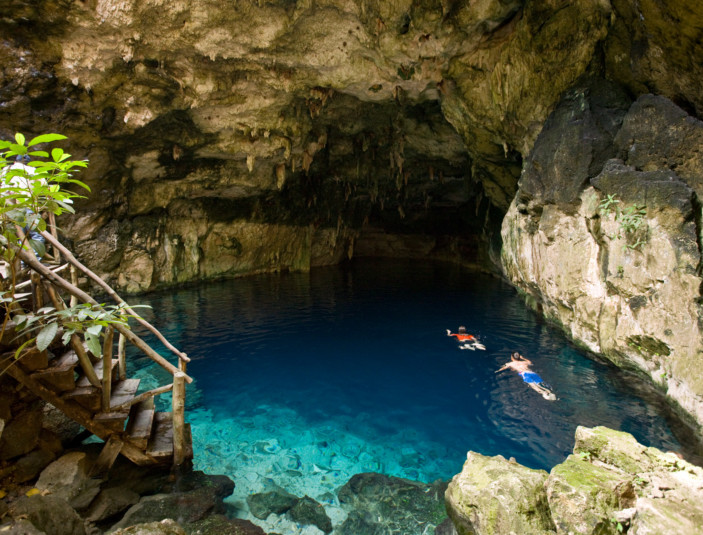 Cenotes de Cuzamá
Cenotes de CuzamáCenotes de Cuzamá
The cenotes in the municipality of Cuzamá, considered some of the most beautiful, are perfect for practicing extreme sports.
You can get there by taking a "truck": transport pulled by mules or horses on rails, which were used to transport henequen leaves from the plantations to the machinery rooms of the haciendas.
Must-sees
Motul
Motul is located 40 km from the city of Mérida. It is mainly distinguished by its cuisine, specifically by the "huevos motuleños" (fried eggs over black beans on a fried tortilla, served with salsa, plantains, chorizo, and queso fresco). It is an easy destination to visit since its attractions are nearby, so you can visit all of them in one day.
It is highly recommended to try the huevos motuleños. You can try them at the local market, where there are several stalls to enjoy this gastronomic delight. They usual order is served with two eggs, but you can have them any way you prefer.
You can also enjoy the Sambulá cenote which is located south of Motul. The atmosphere is quiet and the cenote is very clean. It has green areas, palapas, dining areas and everything you need to spend a pleasant time with your family or friends.
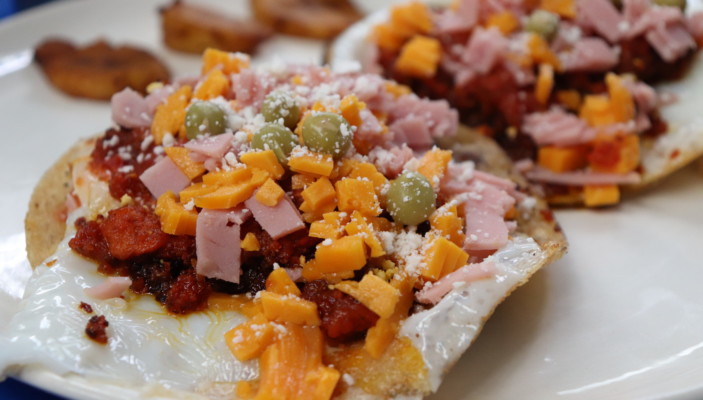 Huevos motuleños
Huevos motuleñosIzamal
Izamal is a beautiful colonial city founded in the mid-sixteenth century on the remains of an ancient Mayan city. This place is known as "City of Hills", retracing the covered pyramids that used to be there when the Spanish arrived. There is also "The City of Three Cultures" named like this because of its blended features of its pre-Hispanic past, the colonial period and the present time.
Nowadays, most of its historical buildings and houses are painted in yellow and white by agreement of local authorities and neighbors, thus preserving a depiction of elegance and charm of a bygone era that singularizes and defines it with a manor glam in the regional context.
In its neatly stamped streets, horse-drawn barouches take the visitor on a charming ride through its squares, parks and its historic suburbs.
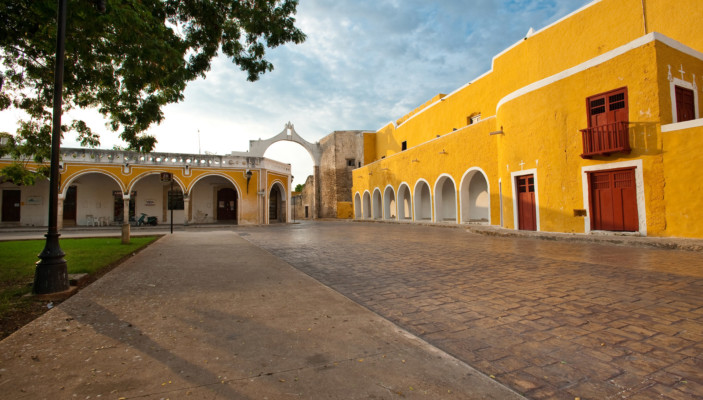 Izamal
IzamalAt night, the city offers a singular experience, when contemplating a starry celestial vault outlined by the profiles of its pyramids, temples and colonial houses; shades that seem to taken up from a centuries-old dream.
Convent of St. Anthony of Padua
This is one of the most important and majestic buildings in Mesoamerica. It is located on the plateau of the main hill of the city. You can walk up to it by means of three ramps built on its sides.
Inside the temple there is a beautiful baroque style altarpiece, covered with gold. It shows scenes representing "The Death of Jesus", "The Birth", "The visit of the Virgin to Saint Elizabeth" and "The visitation of the angel to Mary". At the bottom, there are niches that let you see the images of "Santa Lucía", "San Antonio", "San Francisco" and "San José". In the upper part, there is a representation of "the Coronation of the Virgin as Queen of Heaven" and below, the image of the Virgin of the Immaculate Conception, a sculpture that was brought by Fray Diego de Landa from Guatemala, which also has a simple rail system that conveys with the Camarín, a space where the religionists show their faith and devotion.
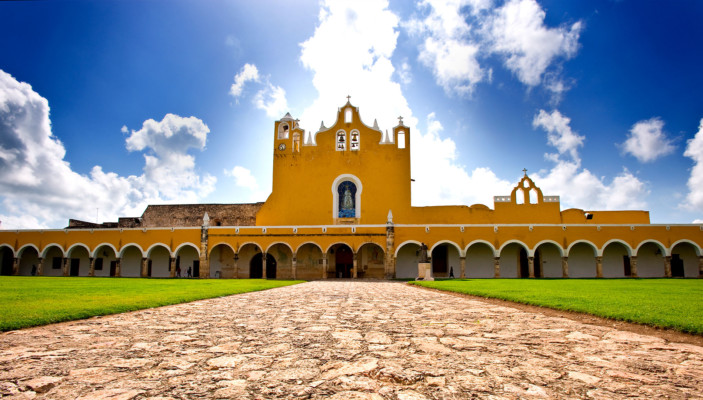 Convent of St. Anthony of Padua
Convent of St. Anthony of PaduaKinich Kakmo Pyramid
It means "Fire Macaw with a Solar Face". It is interpreted that the Mayans believed that the god Kinich came down in the heat of the noonday sun, to burn and therefore purify the sacrifices or offerings brought to the Mayan pantheon, using the form of a macaw. It is the largest in surface of the Yucatán Peninsula and the third of Mexico after the Pyramid of the Sun in Teotihuacán and Cholula in Puebla.
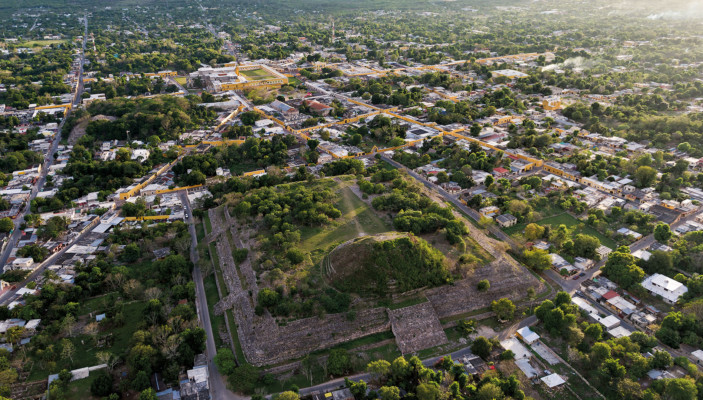 Kinich Kakmo Pyramid
Kinich Kakmo Pyramid
